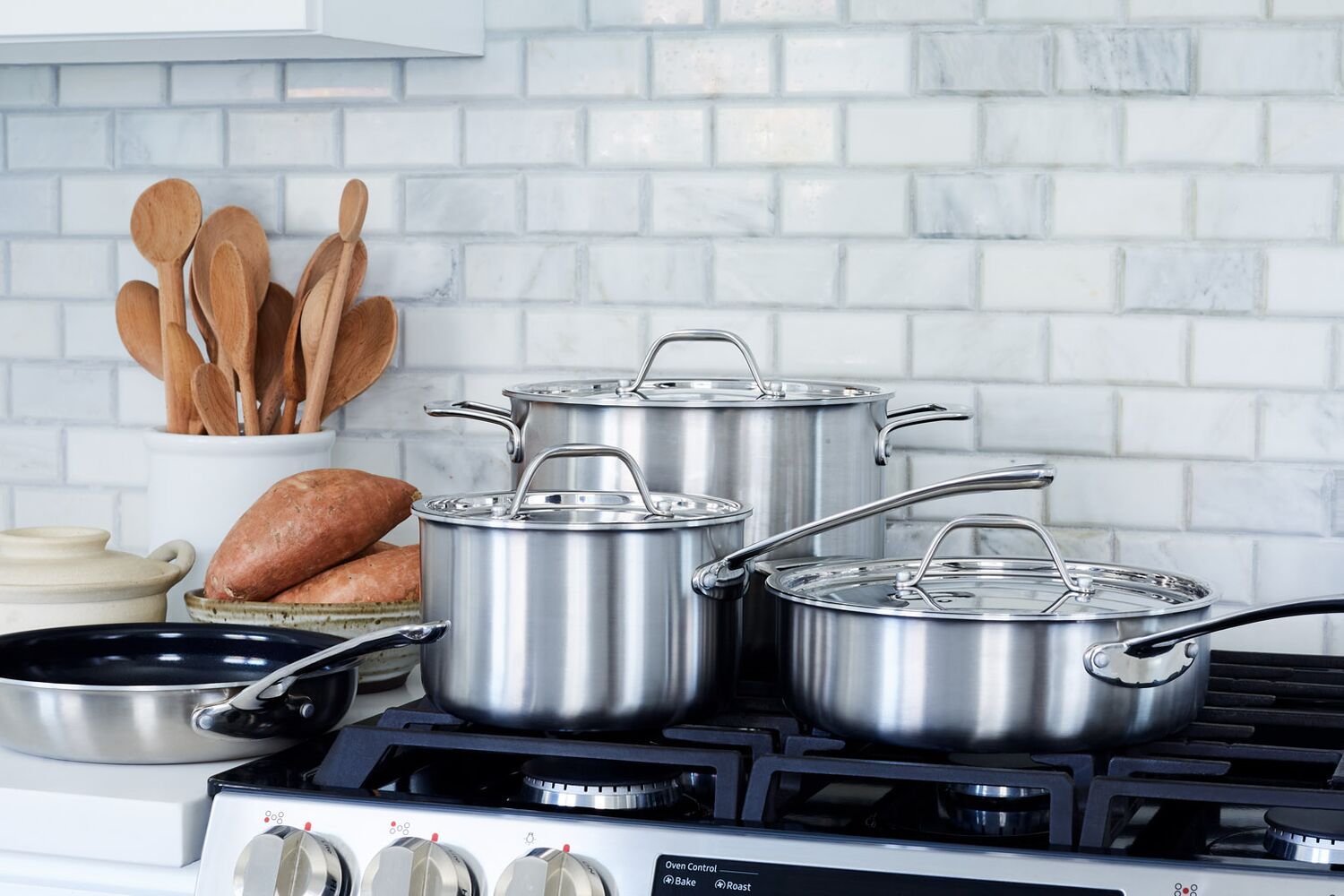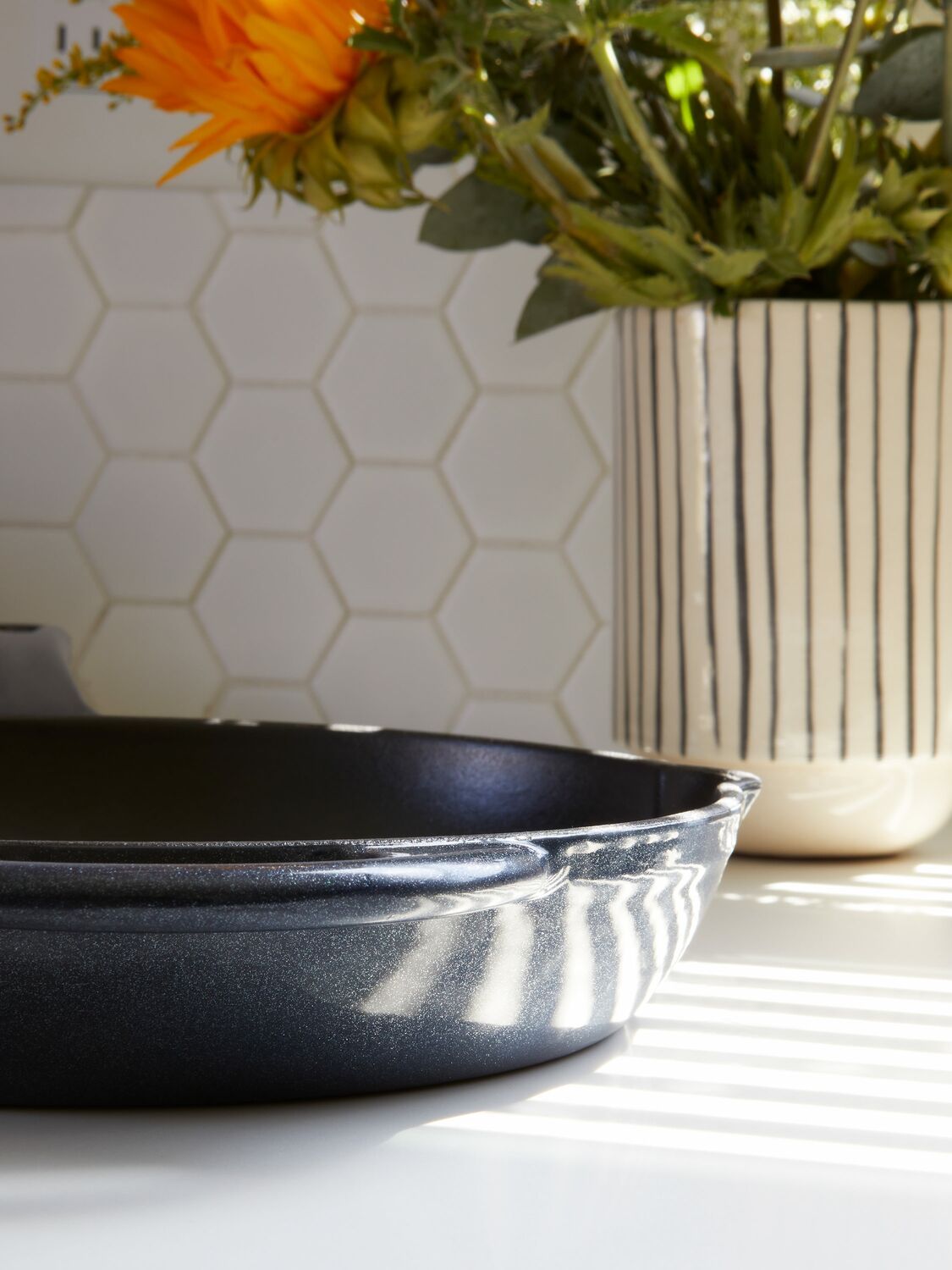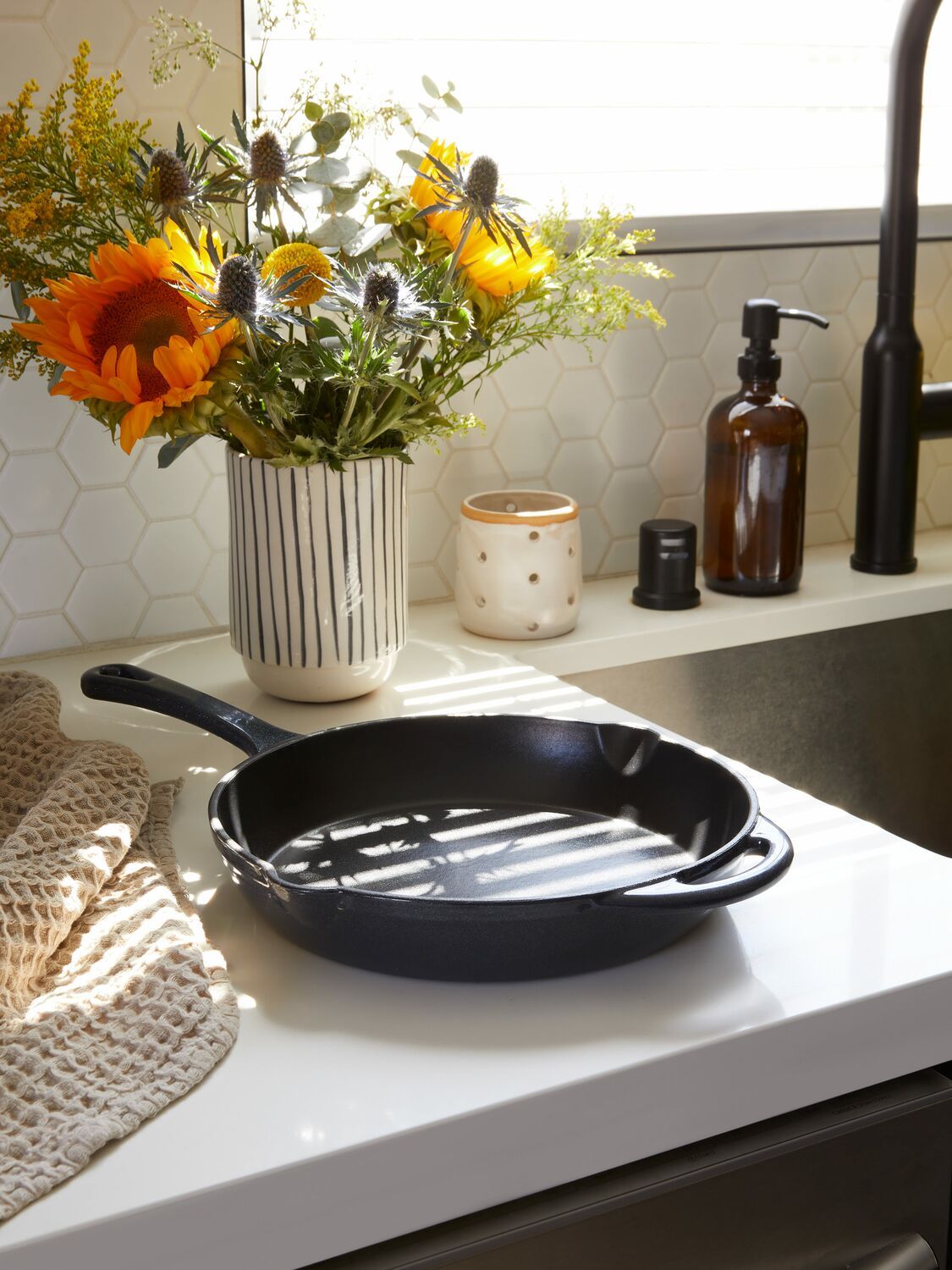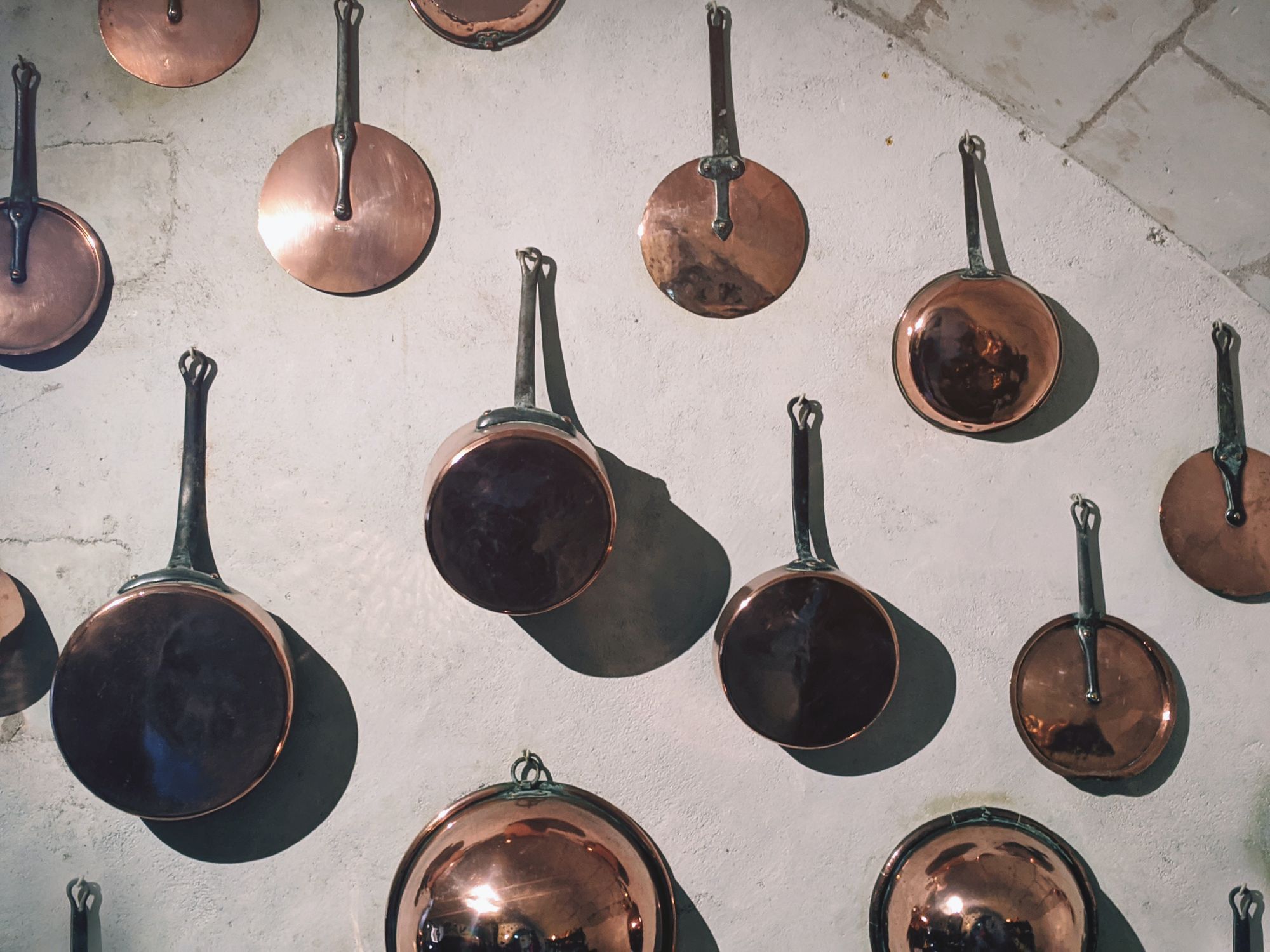Unless you’re a pro, you don’t need more than four pieces of cookware for all your cooking needs. Knowledge about the materials, however, is what will ensure the success of your culinary experiments.
Buying your first cookware set is a commitment just like your first cashmere coat, your first “grown up” bag or your first piece of jewelry: something worth investing in that will accompany you for several years.
In fact, budget-friendly aluminum skillets work...fine when it comes to sautéing tofu, chicken, shrimp and vegetables, with varying degrees of success…until they don’t. On top of having a short life span, cheap pans diffuse heat poorly and react with the food, which not only botches the cooking, but is also bad for your health (do you want parts of aluminum in your sauce? I don’t think so)
The best cookware set is the one that focuses on the pieces you actually need to cook at home and avoids creating unnecessary clutter—urban dwellers are particularly mindful of this plight.
What constitutes the best pots and pans might vary based on personal cooking preference, culture, and diet, but we highly endorse these four essentials: a shallow frying pan to sauté vegetables; a saucepan to concoct rich sauces; a sauté skillet to sear protein to perfection, and a stock pot for pasta, soups, and stews.
What makes the whole difference, though, lies in the materials.
Stainless Steel is The Most Versatile
Stainless steel is the jack of all trades in cookware: it’s durable and great for cooking food at high temperatures, and, most importantly, it’s dishwasher safe, which means that you won’t have to spend a sizable amount of time having to clean it. Yet, it’s not the best heat conductor, which means that a pot or pan made of stainless steel will take much longer to heat up food than one made of a better heat conductor. For this reason, it’s best to look for fully clad tri-ply stainless steel, with its aluminum core sandwiched between layers of stainless steel extending to the sides of the pan: it boasts even heat distribution, since aluminum heats up quickly and distributes heat well, while steel is very durable and holds heat nicely --and aluminum will not get near your food).

Ceramic Is Better Than Teflon, for your non-stick needs
Looking for a sturdy non-stick option? Consider ceramic: it’s an environmentally friendlier option than the oft-used teflon, it’s relatively affordable, and distributes heat evenly.
Ceramic non-stick coatings are typically made from inorganic minerals, primarily silicon and oxygen, which means they don’t contain any carbon: the absence of carbon is not only more environmentally friendly, but allows ceramic-coated cookware to withstand temperatures up to 450 C (roughly 842 F), while Teflon will deteriorate upon reaching 500 F.
What’s more, ceramic is non porous and, due to its non-stick properties, is quite easy to clean—no scrubbing required, even though--lazy ones be warned--ceramic cookware does not fully agree with dishwashers. Yet, clean-up is quick and easy, we promise.


Cast Iron is both dependable and fickle
An ideal heat conductor, cast iron cookware heats evenly and consistently, and, if you’re crafty enough, one cast iron skillet or cast iron frying pan can tide you over any cooking task, and can seamlessly be transferred from the stovetop to the oven. Sure, it requires some well-targeted maintenance, such as seasoning, which consists of rubbing in some grease (it can be oil too) and then baking it at a high temperature. This process creates a film that makes the pan naturally non-stick. Given that cast iron cookware is prone to rusting, though, washing it requires a lot of caveats: no soaking in water, no soap, no steel wool, and, of course, no dishwasher, which might scare off those who are not thrilled at the prospect of doing the washing up.

Copper is for the pros
Copper is an excellent conductor: in electronics, it is used in many categories of electrical wiring and it was one of the essential components of the telegraph. The same applies to heat: copper cookware is an essential tool among chefs because it heats quickly and adjusts to changes in temperature just as quickly, which allows greater control over one’s cooking. Their higher price tag is reflective of this
Yet, it’s quite finicky: copper is reactive with food, which means copper pots and pans need to be lined with either tin or stainless steel, which makes them even more expensive. What’s more, they’re neither dishwasher safe and have to be polished frequently to avoid corroding.
Where Italic Stands
Keeping in mind that different materials have different properties, Italic created a series of cookware options that are fit for both the entry-level cook and the expert in need for a nimble solution. Our Zest Cookware Set includes 3 qt Saucepan, 10-in Fry Pan, 3.5 qt Sauté Pan, and 8 qt Stock Pot. The home chef was our ideal customer in this respect, and we believe these four utensils are the ideal at-home arsenal. What’s more, the Zest Stainless Steel Cookware comes with a ceramic coating on top of a 18/10 Stainless Steel 3-Ply construction: it incorporates the best of both stainless steel & ceramic cookware design and properties, making it a real unicorn.
And once your basics are already covered, we also expanded our range to include a cast iron frying pan. We wisely coated it in enamel for you to avoid the extra “seasoning” prepwork and the lengthy cleaning-up process.